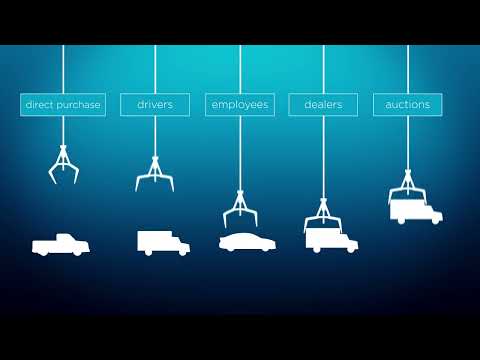-
What We DoFrom fleet management and productivity solutions to upfitting, fabrication, and insurance, Holman has the integrated automotive services expertise to keep your business moving.OVERVIEW
-
SolutionsWith a strategic solution that works for you and your business, you can unlock revenue-generating opportunities and begin managing your fleet as an investment.OverviewSolutions by IndustryHolman's fleet expertise covers nearly every vertical industry. No matter your field, we can meet your fleet challenges head on.Solutions by IndustryPersonalized SolutionsEvery company has its own unique set of challenges and considerations when it comes to fleet management. Holman offers customizable solutions to fit your needs.Build Your Own
-
ResourcesWe have a lot to share. Browse our resources library for current insights, data, strategies, and success stories from our own experts in their respective fields.Overview
-
About UsWhen Holman was founded in 1924, we set something positive in motion. Our consistent focus on people and our commitment to integrity make us who we are today.Overview
 Join Our TeamWe’re not just in the automotive business, we’re in the people business. Join us for the ride.Browse Careers
Join Our TeamWe’re not just in the automotive business, we’re in the people business. Join us for the ride.Browse Careers
Fleet Recovery Solutions
Holman Marketing
June 9, 2020

Do you remember it? That “oh no” moment (although you may have opted for a different word than “no”) when you realized that some type of disruption was going to cause a serious tsunami for your fleet?
Whether your industry experienced a surge or drop in demand, you may have spent several months treading uncertain water. As the floods recede and things settle down you’re realizing just how intense the currents were and deep the swells became.
Vehicle Lifecycle Management
To find your direction, you can rely on the four cardinal segments of your fleet vehicle lifecycle to point the way: buy, drive, service, and sell. Here is a simple fleet recovery plan to get your fleet operation back on steady ground.
BUY – The initial OEM factory closures probably threw off your vehicle replacement schedule as well as your budget plans. But while factories have since reopened, other factors such as supply constraints and workforce challenges have continued to disrupt vehicle availability.
With vehicles still in short supply, now is the perfect time to reassess your acquisition and upfitting strategy to ensure they still align with the goals of your business, as well as to ensure your vehicles are still the right fit for their intended purpose.
Take into consideration both short-term and long-term goals and adjust your lifecycle strategy accordingly. Also don’t forget that leasing is a viable option for reducing your upfront capital expenditure too. Don’t get tunnel vision on just buying if leasing turns into a better fit.
DRIVE – Depending on your business, if demand for your vehicles went up, you should be leaning more on newer, lower mileage vehicles. They’ll ensure reliability and efficiency at a time when every penny counts. And since your vehicles play an essential role in your business, you’ll want to be sure you have insurance coverage that makes the most sense for your business and minimizes your corporate risk.
However, if utilization dropped and you parked some of your older, less efficient units, now’s the time to figure out if you need to bring them back into active service or remarket them.
SERVICE – If vehicle demand has remained high, sticking to your preventive maintenance (PM) schedule is more important than ever. It’s the best way to deter component failures that will prematurely take your vehicles out of service.
As disruptions subside and business levels stabilize, you should reassess your approach to maintenance to ensure your PM schedule aligns with current operating conditions.
SELL –Your vehicles are company assets, and you can sell them as part of a short-term strategy to reduce fixed expenses or increase cash flow.
The used vehicle market is red-hot right now and this might be the perfect time to get top-dollar for your underutilized assets that may no longer provide the service you need. Before selling those assets though, remain mindful of any increasing demand as conditions are turning around. You don’t want to be caught shorthanded, especially with factories operating at limited capacity or if your upfitted vehicles require longer build and delivery timeframes.
Remarketing upfitted vehicles with the right equipment may also help get the most for your vehicle. Review how this plays into your cycle strategy.
Grab an oar and row to shore
As you climb out of your short-term pace and into a fleet recovery plan, revisit the conservative solutions you implemented for allocating your capital and making the smartest use of your vehicles. Through flexibility and innovative thinking, you can steer your strategy toward calmer seas on the economic horizon.
Related Resources
Explore more related industry news, insights, and developments.
It looks like you've navigated to our Holman CA website and are located outside of this region. Would you like to continue or select a different region?
✕








